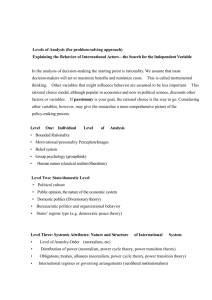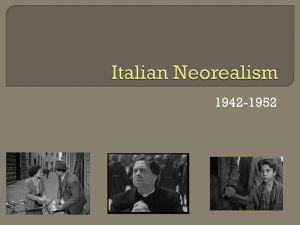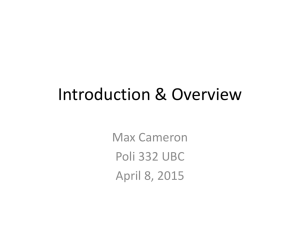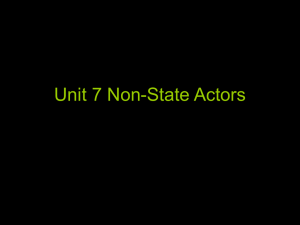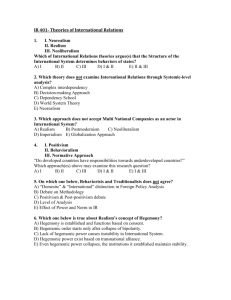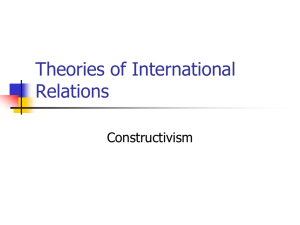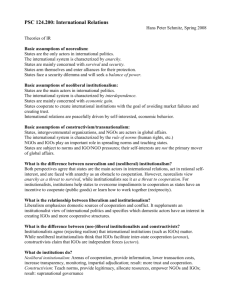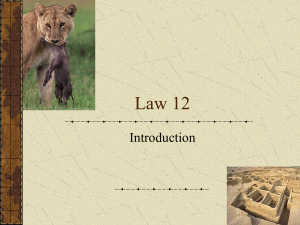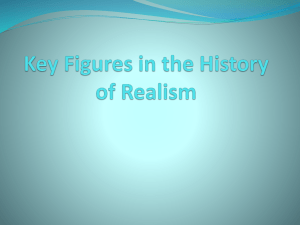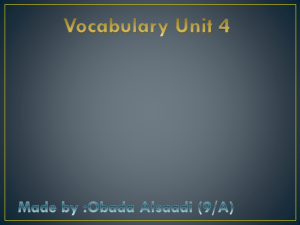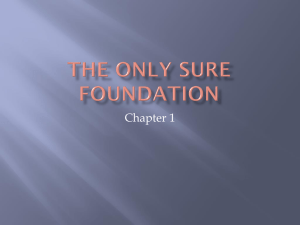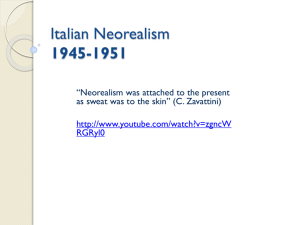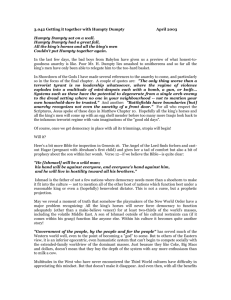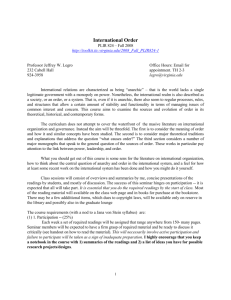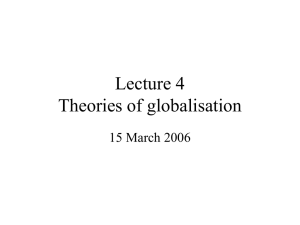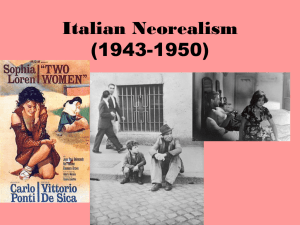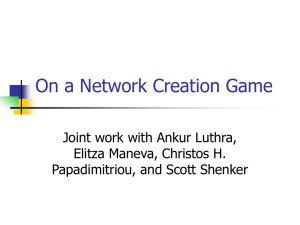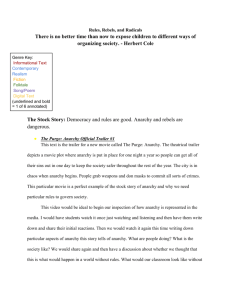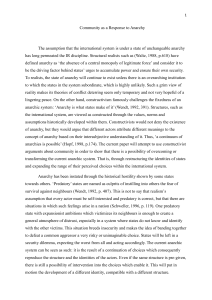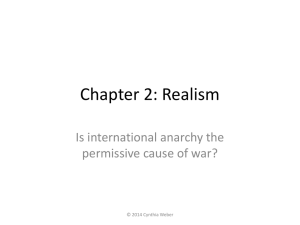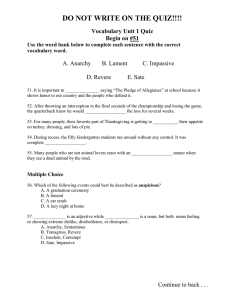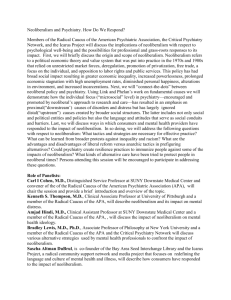ppt
advertisement
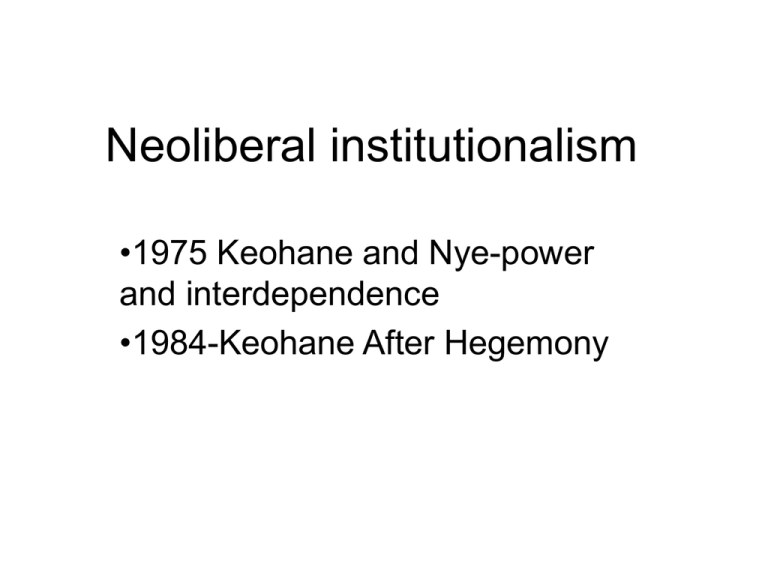
Neoliberal institutionalism •1975 Keohane and Nye-power and interdependence •1984-Keohane After Hegemony State cooperation • Harmonization of actions among states • Aim is to reach mutually beneficial outcomes • Cooperation through institutions • Overall aim is to manage anarchy by reducing uncertainty by generating information Anarchy • Key assumption in neoliberalism as well • Yet, it can be managed by institutions rather than only by balance of power • This constitutes a key difference from neorealism • Both neorealism and neoliberalism- see anarchy as given 2nd versus 3rd image • 2nd image-state level theories- all theories that look at domestic level attributes • 3rd image- systemic factors- neorealism and neoliberalism are both systemic • Their main unit of analysis are different Functionalism • 1943 David Mitrany-A working peace system • Territory and authority linkage is cause of war • Aim is to divorce these two and create a linkage between function and authority International cooperation • Functionalism-theory of international cooperation • Aim is to prevent another European war • Neofunctionalism-Haas- 1957, theory to understand precisely the European integration process • Both explain integration- could be seen as an alternative to power politics
